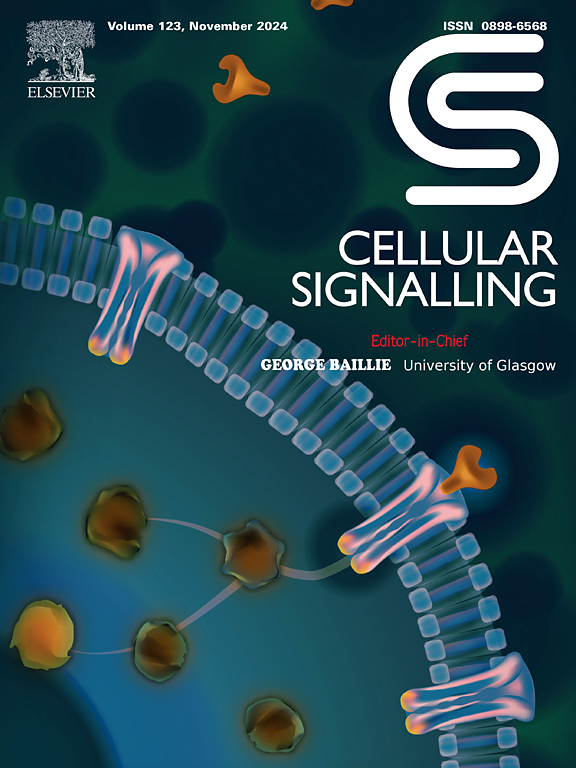在宫颈癌中,LINC02593通过cop1介导的p53降解阻碍细胞衰老
IF 4.4
2区 生物学
Q2 CELL BIOLOGY
引用次数: 0
摘要
逃避细胞衰老是宫颈癌(CC)维持恶性发展的标志之一。尽管驱动CC细胞衰老的调节因子已被广泛认识,但潜在的上游机制仍未完全了解。长链非编码rna (lncRNAs)在细胞衰老过程中发挥着重要的调节作用。在这里,我们进行了lncRNA分析,发现LINC02593在诱导衰老的宫颈鳞状细胞癌(CSCC)细胞中是一个显著下调的lncRNA。LINC02593在CSCC组织中表达上调。在体外和体内实验中,LINC02593的缺失导致了明显的细胞衰老表型和肿瘤生长抑制,而LINC02593的过表达则抑制了阿霉素诱导的细胞衰老。LINC02593通过抑制p21的表达来延缓细胞衰老,这种调节主要依赖于p53蛋白的降解。机制上,LINC02593作为支架,桥接COP1的线圈结构域和p53的c端结构域,增强p53与其E3泛素连接酶COP1之间的亲和力。“支架”功能促进了COP1对p53的降解以及下游p21的抑制,最终避免了细胞衰老。总的来说,我们发现了一个以前未知的机制,即LINC02593通过操纵衰老来促进CC进展。本文章由计算机程序翻译,如有差异,请以英文原文为准。
LINC02593 impedes cell senescence via COP1-mediated p53 degradation in cervical cancer
Evasion of cellular senescence is one of the hallmarks of cervical carcinoma (CC) to maintain malignant development. Even though the regulators driving CC cell senescence are widely recognized, the underlying upstream mechanisms are still not fully understood. Long non-coding RNAs (lncRNAs) are emerging as important regulators in cell senescence. Here, we conducted a lncRNA profiling and identified LINC02593 as a significantly downregulated lncRNA in induced senescent cervical squamous cell carcinoma (CSCC) cells. LINC02593 is upregulated in CSCC tissues. Depletion of LINC02593 resulted in a marked cellular senescence phenotype and tumor growth inhibition in vitro and in vivo, whereas LINC02593 overexpression suppressed doxorubicin-induced cell senescence. LINC02593 was shown to impede cell senescence by inhibiting p21 expression, and this regulation was mainly dependent on p53 protein degradation. Mechanistically, LINC02593 served as a scaffold, bridging the coiled-coil domain of COP1 and the C-terminal domain of p53, enhancing the affinity between p53 and its E3 ubiquitin ligase COP1. The “scaffold” function facilitated p53 degradation by COP1 as well as the downstream p21 repression, eventually evading cell senescence. Overall, we characterized a previously unknown mechanism by which LINC02593 manipulated senescence to promote CC progression.
求助全文
通过发布文献求助,成功后即可免费获取论文全文。
去求助
来源期刊

Cellular signalling
生物-细胞生物学
CiteScore
8.40
自引率
0.00%
发文量
250
审稿时长
27 days
期刊介绍:
Cellular Signalling publishes original research describing fundamental and clinical findings on the mechanisms, actions and structural components of cellular signalling systems in vitro and in vivo.
Cellular Signalling aims at full length research papers defining signalling systems ranging from microorganisms to cells, tissues and higher organisms.
 求助内容:
求助内容: 应助结果提醒方式:
应助结果提醒方式:


